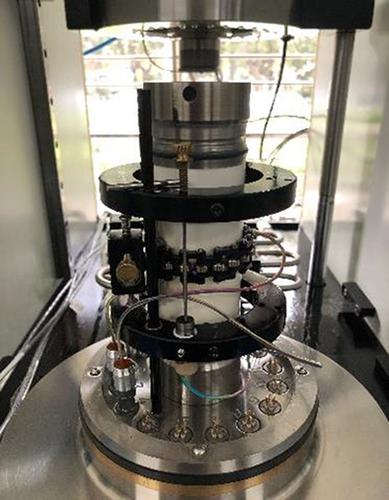当前位置:
X-MOL 学术
›
Polym. Compos.
›
论文详情
Our official English website, www.x-mol.net, welcomes your
feedback! (Note: you will need to create a separate account there.)
Experimental investigation of the hydrostatic compression of a hollow glass microspheres/epoxy resin under high‐pressure conditions at the full ocean depth
Polymer Composites ( IF 4.8 ) Pub Date : 2020-09-11 , DOI: 10.1002/pc.25797 Gangjun Zhai 1, 2 , Yue Ding 2 , Yin Wang 1, 3 , Zhe Ma 1, 2
Polymer Composites ( IF 4.8 ) Pub Date : 2020-09-11 , DOI: 10.1002/pc.25797 Gangjun Zhai 1, 2 , Yue Ding 2 , Yin Wang 1, 3 , Zhe Ma 1, 2
Affiliation

|
An experimental study was performed on a new composite material, namely, a hollow glass microsphere/epoxy resin composite material. As a new type of solid buoyancy material, the proposed composite material is promising for use in submersible, deep‐sea oil risers. This composite material has many advantages, including the ability to bear extreme temperature, corrosion, and hydrostatic pressure up to tens of megapascals. In this study, the hydrostatic compression properties of six different mass filling ratio samples were tested based on an advanced triaxial testing system with varying temperatures. Some basic parameters, such as density, axial and radial stress‐strain curves, and volume strain, were obtained. The elastic modulus and Poisson's ratio were subjected to nonlinear fitting. Additionally, the elastic‐plastic performance was analyzed according to the residual strain. A new method to characterize the properties of the material is proposed. These data will be used to develop new constitutive models and to predict the structural strain in engineering applications under high hydrostatic compression.
中文翻译:

Experimental investigation of the hydrostatic compression of a hollow glass microspheres/epoxy resin under high‐pressure conditions at the full ocean depth
An experimental study was performed on a new composite material, namely, a hollow glass microsphere/epoxy resin composite material. As a new type of solid buoyancy material, the proposed composite material is promising for use in submersible, deep‐sea oil risers. This composite material has many advantages, including the ability to bear extreme temperature, corrosion, and hydrostatic pressure up to tens of megapascals. In this study, the hydrostatic compression properties of six different mass filling ratio samples were tested based on an advanced triaxial testing system with varying temperatures. Some basic parameters, such as density, axial and radial stress‐strain curves, and volume strain, were obtained. The elastic modulus and Poisson's ratio were subjected to nonlinear fitting. Additionally, the elastic‐plastic performance was analyzed according to the residual strain. A new method to characterize the properties of the material is proposed. These data will be used to develop new constitutive models and to predict the structural strain in engineering applications under high hydrostatic compression.
更新日期:2020-09-11
中文翻译:

Experimental investigation of the hydrostatic compression of a hollow glass microspheres/epoxy resin under high‐pressure conditions at the full ocean depth
An experimental study was performed on a new composite material, namely, a hollow glass microsphere/epoxy resin composite material. As a new type of solid buoyancy material, the proposed composite material is promising for use in submersible, deep‐sea oil risers. This composite material has many advantages, including the ability to bear extreme temperature, corrosion, and hydrostatic pressure up to tens of megapascals. In this study, the hydrostatic compression properties of six different mass filling ratio samples were tested based on an advanced triaxial testing system with varying temperatures. Some basic parameters, such as density, axial and radial stress‐strain curves, and volume strain, were obtained. The elastic modulus and Poisson's ratio were subjected to nonlinear fitting. Additionally, the elastic‐plastic performance was analyzed according to the residual strain. A new method to characterize the properties of the material is proposed. These data will be used to develop new constitutive models and to predict the structural strain in engineering applications under high hydrostatic compression.











































 京公网安备 11010802027423号
京公网安备 11010802027423号